Click here to subscribe and get instant access to read this report.
Click here to check your existing subscription status.
Existing members, login below:
Click here to subscribe and get instant access to read this report.
Click here to check your existing subscription status.
Existing members, login below:
“The discovery of Higgs boson particles would be the discovery
of a new force of Nature and the first one we will have seen in over a century.”
- Joseph Lykken, Ph.D., Fermi Lab Particle Physicist

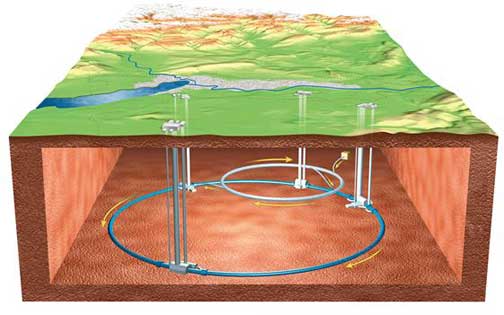
Return to Part 1
September 9, 2008 Batavia, Illinois -
Composition of Universe .4% glowing matter such as stars. 3.6% “normal” matter as we know it in planets and stars. 22.0% cold, invisible “dark matter” detectable only by its gravitational influence on normal matter. 74.0% invisible “dark energy.”
Click here to subscribe and get instant access to read this report.
Click here to check your existing subscription status.
Existing members, login below:
“I am surprised that if it’s going to be big solar cycle 24, it’s taking this long for sunspots to get started.”
- David Hathaway, Ph.D., Solar Physics Team Leader,
NASA Marshall Space Flight Center, Huntsville, Alabama
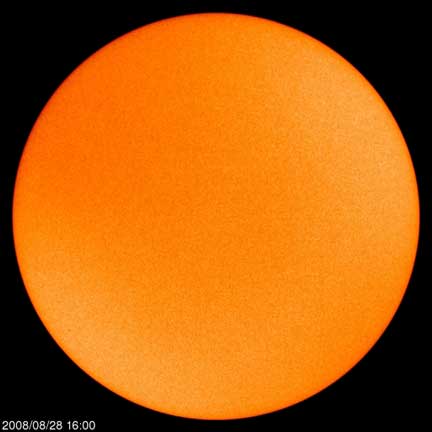
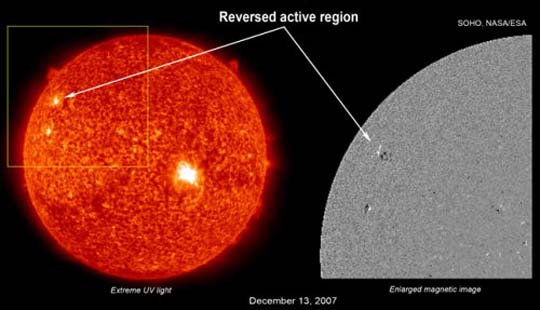
August 29, 2008 Huntsville, Alabama - On July 11, 2008, NASA headlined one of its press releases as, “What's Wrong with the Sun? (Nothing).” The featured scientist in the news release was solar physicist David Hathaway, Ph.D., Solar Physics Team Leader, NASA Marshall Space Flight Center in Huntsville, Alabama. Dr. Hathaway received his Ph.D. in Astrophysics from the University of Colorado - Boulder in 1979.
Click here to subscribe and get instant access to read this report.
Click here to check your existing subscription status.
Existing members, login below:
Click here to subscribe and get instant access to read this report.
Click here to check your existing subscription status.
Existing members, login below:
“Right now, we don't know whether finding perchlorate is good news or bad news for possible life on Mars.”
- Peter Smith, Ph.D., Phoenix Lander Principal Investigator
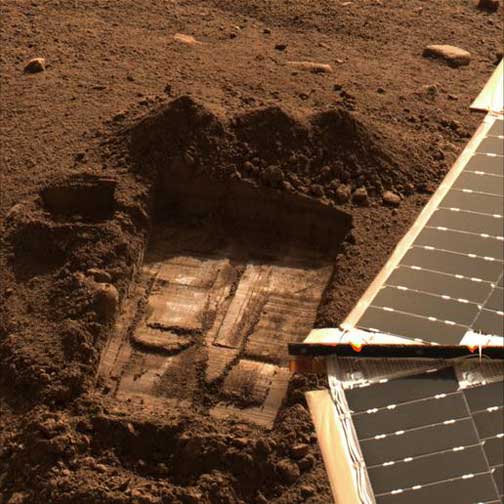
August 5, 2008 Pasadena, California - Responding to the growing buzz on the internet about suppressed Mars Phoenix Lander data and the White House Science Adviser being briefed on a new and potentially disturbing discovery in the lander's soil analysis, today Phoenix mission scientists spoke and answered questions in an hour phone conference produced by NASA and JPL.
Click here to subscribe and get instant access to read this report.
Click here to check your existing subscription status.
Existing members, login below:
“As you must know LANCER [JFK] has made some inquiries regarding our activities which we cannot allow.”
- Director of Central Intelligence (MJ-1)
Return to Part 1
August 3, 2008 Newport Beach, California - The following documents begin with the cover letter dated June 23, 1999, sent by the alleged CIA counter-intelligence leaker with the 9-page “burned memo” to Timothy Cooper at his Big Bear Lake, California, home.
Click here to subscribe and get instant access to read this report.
Click here to check your existing subscription status.
Existing members, login below:
“We found a possible AWAC that maintained an altitude of about 41,000 feet, which is higher than most of your civilian aircraft fly. It was there for the entire time of our radar data and it’s flying figure 8s over the area – going as far as north Texas to as far south as the
northern Austin area.”
- Robert Powell, MUFON Director of Research
“I think the January 8, 2008, Carswell log book was blacked out on the ten F-16s because the military wanted as little known as possible about what their F-16s were doing that day.”
- Glen Schulze, Electrical Engineer and Radar Specialist
Return to: Part 1
Updated: July 29, 2008 Littleton, Colorado - Interviews with Glen Schulze and Robert Powell continue in Part 2 about the discovery of an unknown object that reflected at least 200 skin-paint returns, but was not sending out transponder signals to the FAA radar towers. Further, that unknown aerial object was moving in a straight line between 6:51 PM and 8 PM towards the George W. Bush ranch in Crawford, Texas. Yet, Glen and Robert could not find any radar signals of jet activity responding to that unknown approaching the property of the American President.
Click here to subscribe and get instant access to read this report.
Click here to check your existing subscription status.
Existing members, login below:
“When radar returns on one unknown object (no transponder beeps) did show up in the data from 6:51 PM to 8:00 PM, on our graph it was traveling a straight line headed for Crawford, Texas.”
- Glen Schulze, Electrical Engineer and Radar Specialist
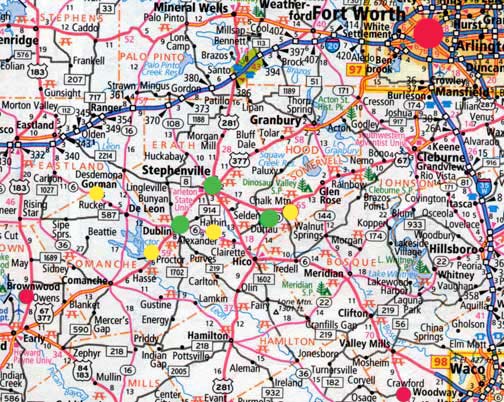
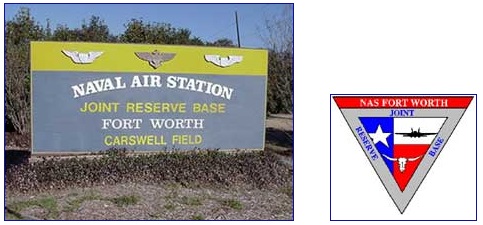
July 26, 2008 Littleton, Colorado - Back in early January to mid-February 2008, a series of unidentified aerial lights and strange craft were reported by dozens of eyewitnesses in the Stephenville, Dublin, and Selden region southwest of Dallas/Fort Worth, Texas. One especially active date was January 8, 2008, beginning a few minutes after 6 PM Central with three eyewitnesses sitting on a hill in Selden southeast east of Stephenville and straight east of Dublin.
Click here to subscribe and get instant access to read this report.
Click here to check your existing subscription status.
Existing members, login below:
“We are not looking for live microbes on this Phoenix instrument suite.
We would not detect them. What we are looking for are the organic compounds that might be the food that could create life, either in the past or some time in the future.”
- Barry Goldstein, Phoenix Project Manager, JPL
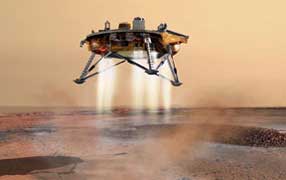
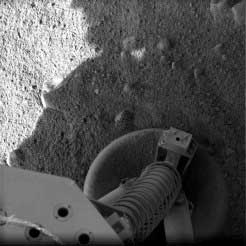
May 29, 2008 Pasadena, California - On Sunday, May 25, 2008, at about 4:53 p.m. Pacific time, NASA and JPL’s Mars Phoenix Lander reached the North Pole of Mars with only minor glitches. First, the sleeve on its robotic arm designed to dig into the Martian permafrost wasn’t completely off, but corrected itself later on. Then the UHF radio signal from the Mars Reconnaissance Orbiter satellite suddenly and mysteriously shut off. Scientists are depending on the MRO radio to communicate with the Phoenix Lander. The radio silence, fortunately, was temporary and only delayed for a day the GO! signal to slowly start the deployment of the Phoenix robotic explorer and its digging arm. In a press conference on Tuesday, May 27th, Phoenix mission officials showed a Mars Reconnaissance Orbiter photograph of the Phoenix hanging from its parachute as it drifted down about 12 miles in front of a North Pole Crater.
Click here to subscribe and get instant access to read this report.
Click here to check your existing subscription status.
Existing members, login below:
“A completely unexpected surprise is that the chemistry of Enceladus,
what's coming out from inside, resembles that of a comet. To have primordial material coming out from inside a Saturn moon raises many questions on the formation of the Saturn system.”
- Hunter Waite, a Principal Investigator, Cassini Mission
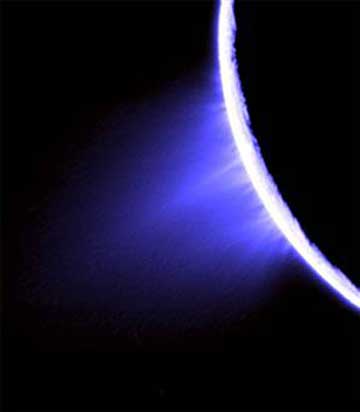
March 30, 2008 Pasadena, California - NASA reported this week:
NASA's Cassini spacecraft tasted and sampled a surprising organic brew erupting in geyser-like fashion from Saturn's moon Enceladus during a close flyby on March 12. Scientists are amazed that this tiny moon is so active, "hot" and brimming with water vapor and organic chemicals.
New heat maps of the surface show higher temperatures than previously known in the south polar region, with hot tracks running the length of giant fissures. Additionally, scientists say the organics "taste and smell" like some of those found in a comet. The jets themselves harmlessly peppered Cassini, exerting measurable torque on the spacecraft, and providing an indirect measure of the plume density.
Click here to subscribe and get instant access to read this report.
Click here to check your existing subscription status.
Existing members, login below:

